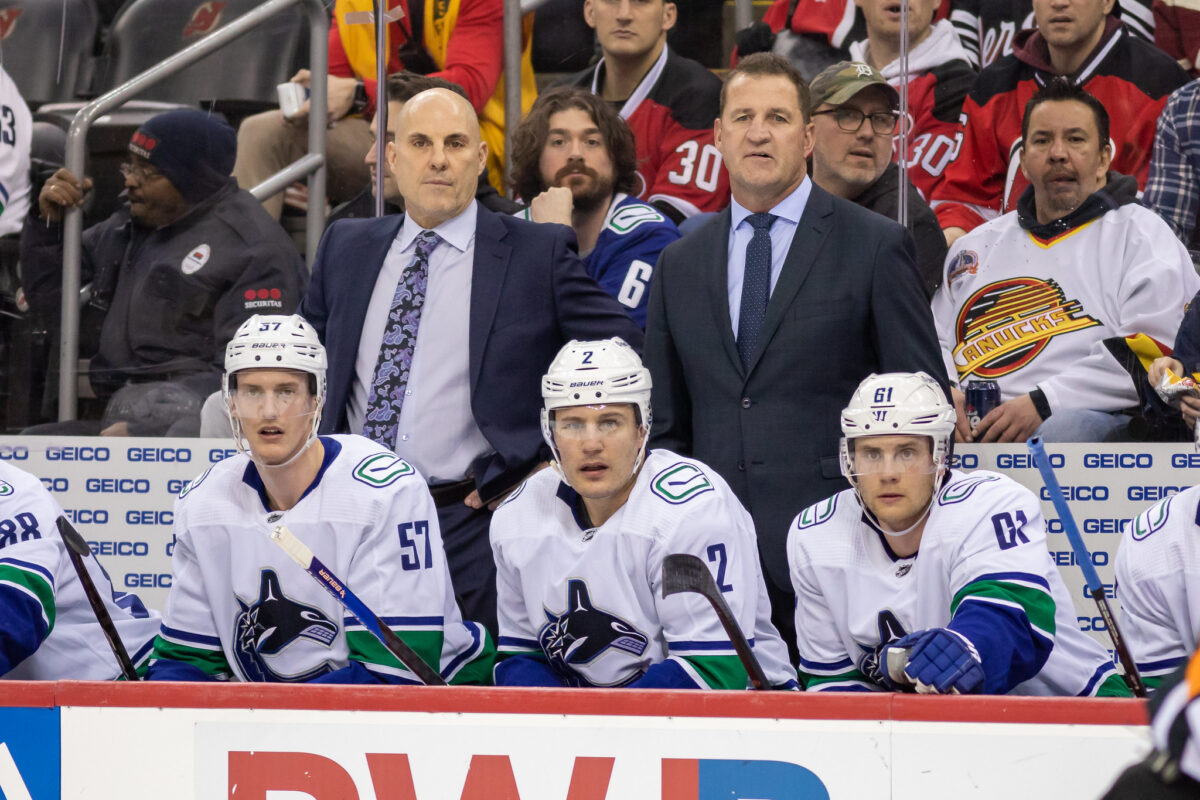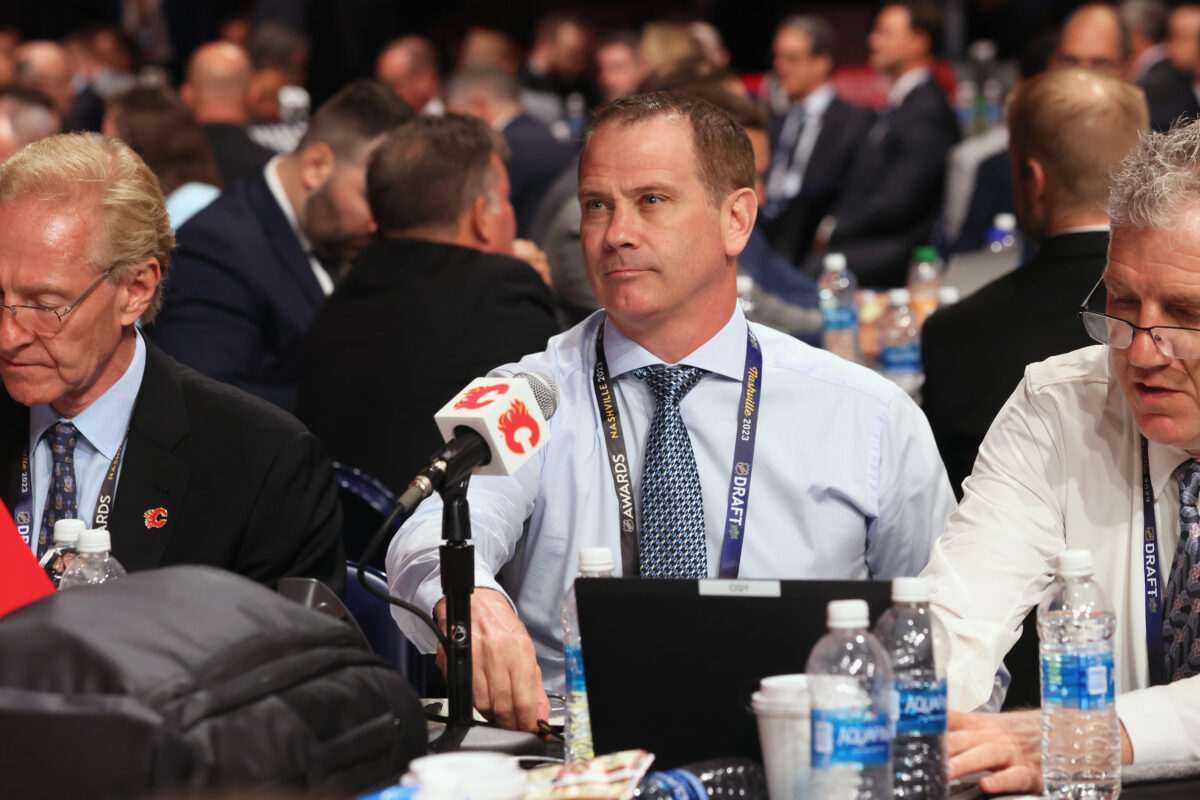The Vancouver Canucks recently exemplified the potential pitfalls of going all-in at the trade deadline, making a series of high-stakes moves that have now left them without significant future assets. In total, the Canucks traded a first, third, fourth, and fifth-round pick, along with players Andrei Kuzmenko, Hunter Brzustewicz, and Joni Jurmo, for the services of Nikita Zadorov (54 games) and Elias Lindholm (26 games).
Specifically, on Nov. 30, 2023, the Canucks moved a fifth-round pick in the 2024 Draft and a third-round pick in the 2026 Draft for Zadorov. Then, on Jan. 31, 2024, they moved Kuzmenko, Jurmo, and Brzustewicz, along with a first-round pick in the 2024 Draft and a conditional fourth-round pick in the 2024 Draft for Lindholm.

Sadly, this aggressive strategy failed to yield long-term benefits for Vancouver. However, only recently has the approach shown its inherent dangers. With the reports that Lindholm won’t be staying in Vancouver and Zadorov will be testing free agency, it looks like a lot was given up for two solid but short-term players.
Canucks’ Trade Deadline Gamble: A Necessary Risk
An “all-in at the trade deadline” move is quite the gamble for any NHL team when weighing short-term success against long-term gain. At the time these deals were made, the Canucks were performing exceptionally well. They had excellent goaltending and an efficient power play. Things were cooking. The Canucks players were playing their best hockey.
Related: Canucks Add 5 New Prospects in the 2024 Entry Draft
Because such situations happen so infrequently, especially for the Canucks recently, team management eagerly made adjustments to push this team deep into the postseason. They were aggressive with their trade moves. They knew what the Canucks needed at that crucial moment in the season. I can only imagine the extensive discussions that ensued before the trades for Zadorov and Lindholm were made. The season’s momentum swayed management to roll the dice, potentially sacrificing long-term stability.
Fans’ demand for immediate results at the trade deadline also tipped the scales. Had the team not done something big, there would have been loud criticism that a crucial moment was missed. Necessary and available assets were allowed to slip away, causing the team’s momentum to falter as the regular season winds down. The team owed it to their long-suffering fanbase to do something big.

When Zadorov and Lindholm showed up, the coaching staff was responsible for bringing out the best in those trade deadline acquisitions. The immediate payoff was mixed. The Canucks could have, and almost did, oust the eventual Western Conference champs, the Edmonton Oilers – even with a then little-known backup goalie named Arturs Silovs. But they did not.
Related: Tocchet’s Canucks Coaching Genius Mirrors Ali’s Rope-a-Dope
Now, with Zadorov and Lindholm moving on, the Canucks’ future remains uncertain. Yet, despite the risks, it was a move the Canucks had to make in the pursuit of postseason success. Such is the path for teams on the cusp of something rare and extraordinary.
On the Other Side, the Calgary Flames’ Windfall
In a bid to solidify their roster for a playoff push, the Canucks traded considerable future assets for short-term gains. Including high draft picks and promising young players in the deal highlighted their commitment to immediate success. However, this gamble did not pay off, as the team failed to achieve significant playoff success with Zadorov and Lindholm.

Conversely, the Flames emerged as significant beneficiaries of this trade. They have bolstered their future by acquiring multiple draft picks and promising prospects. I even read somewhere that such trades were dubbed a “Conroy masterclass” (for Flames general manager Craig Conroy). The Flames GM showed strategic acumen by leveraging the Canucks’ desperation for short-term success.
Lessons from the Canucks & Flames Trade Deadline Deals
The Canucks-Flames trades are stark reminders of the risks associated with going all-in at the trade deadline. First, any team engaging in such trades must evaluate their short-term needs vs. long-term planning. Teams must balance the desire for immediate success with maintaining a pipeline of young talent and draft capital. Overcommitting to short-term gains can deplete a franchise and cause it to struggle in subsequent seasons.
Related: Canucks’ JT Miller’s Impact Goes Beyond Points
Second, evaluating the impact of acquiring players like Zadorov and Lindholm can provide a temporary boost, but their impact must be weighed against the loss of future assets. In this case, the short-term addition did not translate into long-term success for the Canucks.
Third, there are strategic advantages for a team looking beyond the immediate season. A team like the Flames can capitalize on others’ desperation, acquiring valuable assets that strengthen their future while their competitors potentially weaken themselves.
The Bottom Line for the Canucks
The Canucks’ aggressive trade deadline moves underscore the potential pitfalls of an all-in strategy. While the allure of immediate success is strong, it can lead to long-term consequences that benefit rival teams. As the Flames enjoy the fruits of their intelligent trades, the Canucks are left to rebuild and reflect on the high price of their gamble. This scenario serves as a cautionary tale for teams contemplating similar strategies in the future.
All this said, there’s no shade thrown from my perspective on the way the Canucks approached their postseason plans. They were close to ousting the Oilers, even with injured world-class goalie Thatcher Demko on the mend. That they didn’t is also true for 30 other NHL teams.
Such decisions make the NHL’s postseason so interesting. It didn’t work this time for the Canucks; however, in another postseason, it might have become the tipping point. NHL teams must navigate a delicate high-wire act every season at the trade deadline. Sometimes you win, and sometimes you don’t. Another season is coming, and we’ll watch it unfold again.
[As a note, I’d love to thank my hockey-watching friend Greg for his insights in writing this post.]
